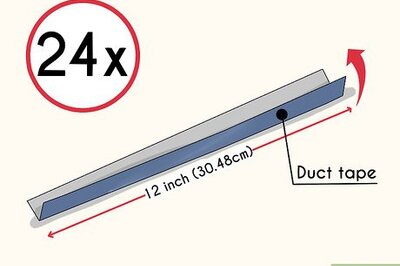
views
New Delhi: Sluggish job creation has been India’s biggest concern in the recent years and the latest Economic Survey tabled in the Parliament on Thursday addressed the problem in the very first chapter.
The annual survey highlighted how a “virtuous" cycle of savings, investment, exports and growth with investment as the “central driver" will help in job creation.
“The overwhelming evidence across the globe, especially from China and East Asia in recent times, is that high growth rates have only been sustained by a growth model driven by a virtuous cycle of savings, investment and exports catalysed and supported by a favourable demographic phase," read the document.
Chief Economic Adviser K V Subramanian’s first economic survey further narrowed down private investment as the “key driver" that drives demand, creates capacity, increases labour productivity, introduces new technology, allows creative destruction, and generates jobs.
Drawing parallels from the Chinese economy, the document shows how high investment makes labour and capital complementary.
“A general apprehension is that high investment rate will substitute labour. This thinking has led to much debate about labour-intensive versus capital-intensive modes of production. However, the Chinese experience illustrates how a country with the highest investment rates also created the most jobs," read the document.
The survey cites international evidences to conclude that capital and labour are complementary when high investment rate drives growth.
The document also makes a “startling" recognition of the fact that India needs old and large firms over “dwarf" ones to boost jobs.
“Dwarfs, which we define as small firms that never grow beyond their small size, dominate the Indian economy and hold back job creation and productivity. While dwarfs account for half of all the firms in organized manufacturing by number, their share in employment is only 13.3 per cent," read the eco survey.
In contrast, the survey states, young and large firms (firms that have more than 100 employees and are not more than 10 years old) account for only 6.2 per cent of firms by number but contribute a quarter of the employment.
At the same time, large but old firms (firms that have more than 100 employees and are more than 10 years old) account for only 9.5 per cent of firms by number but contribute half of the employment.
Thus, firms that are able to grow over time to become large are the biggest contributors to employment and productivity in the economy, it said. In contrast, dwarfs that remain small despite becoming older remain the lowest contributors to employment and productivity in the economy.




















Comments
0 comment